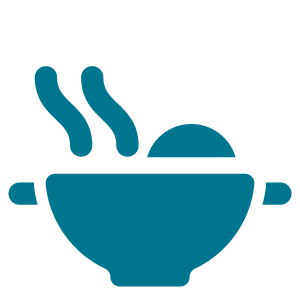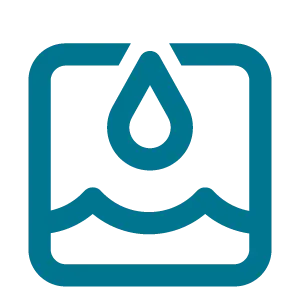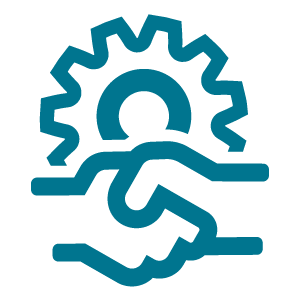The Net Zero Healthcare Tool
Towards sustainable healthcare
With Net Zero Healthcare Impact, we assist hospitals, medical departments and other relevant actors in healthcare with their move towards net zero by focusing on ecological and economic parameters.
We believe all progress starts with monitoring the current impact of healthcare in terms of waste generation, resource use and carbon dioxide emissions, as well as in terms of supply costs, hospital labour costs and waste costs.
These facts and figures should be incorporated in annual and/or sustainability reports that should be transparently visible for internal and external stakeholders.
We believe that stakeholder involvement of doctors, nurses, sustainability coordinators and passionate staff members is very important to drive this agenda forward and select the priorities.
Finally, we believethe regulatory framework is a key factor in compliance. We work within the European Commission's Corporate Sustainability Reporting Directive (CSRD) and adopt an ESG approach (Environmental, Social, Governance). Although the current legal compliance situation for hospitals regarding CSRD is not yet clear, we believe being CSRD compliant will be a strategic asset and a comparative advantage for hospitals. Both today with regard to, for instance, obtaining loans from banks, but also tomorrow by being a leader in ecological, economic and human resources.


Beyond CO₂
While CO2 reduction remains the most urgent challenge, we take a broader ecologic approach. We perform a full Life Cycle Assessment (LCA) for as many products and processes as possible, covering all impact categories. This ensures that proposed solutions do not simply shift the burden from one environmental problem to another. We also take social and governance impacts into account, such as the working time nurses spend on a particular task.
Not all of these LCA categories are yet fully addressed in the scientific literature we rely on. We expect this domain to grow rapidly in the coming years, and we encourage industrial companies and pharmaceutical manufacturers to conduct and publish these LCA studies for all their products and medicines, which will make sustainability assessments even more in-depth and accurate at the individual product level.
The report is prepared in accordance with the EFRAG standard for voluntary reporting, the so-called VSME, of which we use the extended version. Our analysis is carried out on the basis of the ten areas listed below.
Medical equipment - consumables
Hospitals are major consumers of single use goods, often produced in low and middle income countries and transported long distances before they are used only once. They end up in incinerators or landfill.
A shift towards a circular economy is taking place and will accelerate in the coming years.
The NZHI solution
Hospitals should have a sustainable purchasing policy statement. We can assist medical departments, hospital boards and supply teams draft this.
We create an overview of the consumption of consumables and equipment purchases and calculate the impact of these activities in terms of CO2, water and waste as well as in terms of costs and health economic impact, if appropriate. We consider alternative suppliers together with our clients, often based on Total Cost of Ownership (TCO) or Life Cycle Analysis (LCA).

Waste
In recent years, the amount of waste in healthcare continues to increase. In Europe it is mostly either dumped in landfills or incinerated. In some countries, all medical waste has to be incinerated as per EU legislation.
Especially for hazardous healthcare waste (up to 25% of all medical waste), incineration is the gold standard, but its ashes are linked with the spread of high concentrations of heavy metals and other pollutants.
The NZHI solution
We believe in the goal of zero waste with a focus on systematically eliminating volumes and toxicity, conserving and recovering materials and avoiding burying or burning waste.
We conduct waste audits in which we weigh, photograph and analyze your waste and make recommendations about reductions that have a strong impact on waste tonnages and CO2 emissions.

Pharmaceuticals
Pharmaceuticals have an impact on the environment, greater than many expect. On the one hand, a lot of energy and water is used to produce and distribute them and a lot of packaging material is used in the process.
On the other hand, there is increasing attention to ecotoxicity caused by medicines. Especially Non Steroidal Anti Inflammatory Drugs (NSAIDs) such as ibuprofen and diclofenac, anti-epileptics such as carbamazepine, macrolid antibiotics (erythromycin, clarithromycin and azithromycin) and estrogens are known to cause ecological damage to plants and animals.
The NZHI solution
We start by mapping the current use of pharmaceuticals and take a lean management approach to avoid expiring stocks. We also look at cheaper alternatives where possible.
One of the current areas of research is the effect that medicines used in hospitals have on the ecosystem through wastewater. This is a promising research domain that we are actively monitoring for solutions.

Chemicals
Healthcare organizations are major consumers of many chemicals but some of them have been identified over the years as toxic. This list includes mercury, sterilants such as ethylene oxide, polyvinyl chloride, flame retardants, phthalates, volatile organic chemicals (used in cleaning), endocrine-disrupting hormones such as bisphenoal A, and heavy metals.
The NZHI solution
A hospital should have a record of all toxic substances in its facilities at all times, including the toxicity data and it must use the hierarchy of controls (elimination, substitution, engineering controls, administrative controls and personal protective equipment) to reduce workers' exposures to hazards.

Transport
While patient transport mainly reflects societal changes about fleet emissions, hospitals can choose to be a leader rather than a follower.
Staff commute and visitor transport also mainly reflects societal changes but hospitals can influence this by using their scale. Making a hospital accessible by bikes and public transport can make a big difference in the number of staff and visitors that come in a sustainble way. Electronic bikes in particular enabled cyclists to travel greater distances for commuting.
The NZHI solution
We assist hospitals with the shift towards a zero emission fleet, mainly with regard to the fleet of ambulances and company cars.
We examine the current mix of transport modes among staff and see if there are barriers to sustainable transport. We encourage the hospital to use its scale to influence the transport modes of its employees and visitors.

Food
Food waste in a hospital at baseline is estimated at 30 to 40%. Waste from vegetables, fruit, bread, pasta, fish and meat is called 'Swill'.
The NZHI solution
We document swill and draw up a strategy to reduce it. The implementation of an active policy can reduce the swill by 10 to 20%.
We investigate alternative suppliers. Food and food supplier choices are also linked to transport and animal welfare.

Energy
It goes without saying that energy is a large cost for hospitals and contributes greatly to emissions. For example, an average hospital consumes 30,000 kwh of energy per bed annually.
The NZHI solution
We assist hospitals reduce their energy consumption by focusing on energy audits and facility operation plan.
We
help hospitals with their
shift towards on-site creating and purchasing clean renewable energy.

Water
Hospitals are huge water consumers. 7% of the water usage for commercial and institutional buildings is used in hospitals.
Discharging wastewater poses several challenges related to chemicals, pharmaceuticals and infectious diseases present in the wastewater.
The NZHI solution
A hospital should aim for net zero water consumption. This can be achieved by collecting rainwater and reusing the hospital's wastewater. Net zero water use reduces the need for municipal water and the export of sewage.
We assist hospitals with setting up a water management plan. We are undertaking the first exploratory steps in measuring pharmaceuticals in hospital waste water.

Construction
Construction activities account for 40% of global CO2 emissions, and if transport is factored in, this figure rises to almost 50% .
Carbon neutral building design strategies often
overlap with the necessity of acute care hospitals to maintain their critical
life support function when essential services or commodities such as water,
heating fuel and power supply are lost.
The NZHI solution
Altough construction is not our primary focus, we can assist medical departments and hospital boards in their negotiations with architects and construction companies to achieve the highest standards in terms of ecological construction.
We want to stress again the importance of getting the plans right, as this will have a massive consequences of the ecological and economic impact of a building during its lifetime.

External services
A hospital must regularly call on external service providers and companies to guarantee its operations.
True sustainability also means making this a priority throughout the entire chain of contacts and subcontractors.
The NZHI solution
We include the ecological impact of all contracts in our analysis and support the hospital in pushing for more sustainable operations when concluding new contracts.

Hospitals
We use this tool to advise hospitals strategically on ESG and CSRD topics and to conduct a full hospital CO2 scan.
Read more on hospitalsMedical Departments
With our tool, we support your medical department to scan and reduce the climate impact.
Read more on departments









